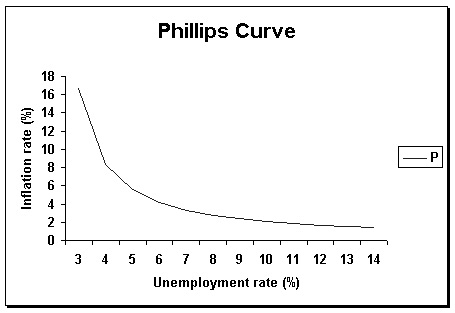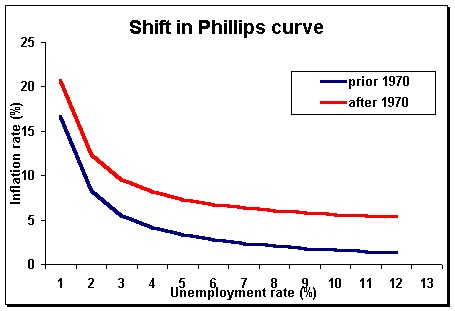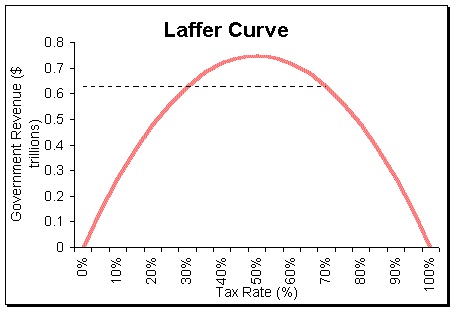Price stability and unemployment: Unemployment vs. inflation
Contents
Introduction
The purpose of this topic is to look at recent changes in economic conditions and study alternative policies for the age old problems of unemployment and inflation.
Phillips curve
The Phillips curve shows that historically a trade-off has existed between a high rate of inflation and a high rate of unemployment. The trade-off has been used for policy purpose in the 1960's to seek an acceptable combination.
Phillips curve shift
The observations for the 1970's did not conform to the trade-off shown in previous Phillips curve statistics. This suggests that the Phillips curve had shifted.
Stagflation
The 1970's experienced a simultaneous excessive rate of unemployment and a high rate of inflation. This combination is referred to as stagflation. Various explanations were offered for this new phenomenon such as commodity price rises, oil crisis, inflation expectations, changes in labor force composition and reliance on recurring Keynesian aggregate demand policies.
Inflation expectations
The period of stagflation was longer and the inflation was more entrenched than expected because of inflation expectations. Inflation was expected to continue and measures were taken to overcome its effects with cost of living adjustment clause in employment contracts and indexing of interest rates.
Acceleration hypothesis
One explanation of stagflation is that the use of expansionary fiscal policies may succeed in reducing unemployment only for a while. But the reemployed workers find out that the increase in inflation has eroded the purchasing power of their income and return to being unemployed. Successive use of expansionary policy results in further increasing inflation as increases in interest rates are passed on in costs and price increases.
Rational expectation
The rational expectation theory suggests that individuals and firms will not take corrective actions in periods of difficulty, but wait for the government to stimulate the economy with appropriate policies.
Labor cost and productivity
Another explanation of stagflation is tied to the decline in productivity gain in the 1970's. Indeed, if wage rates increase (dW) at the same rate as productivity gains (dProd), then labor cost increase (dLC) will be null: dLC = dW - dProd = 0 But, a decline in productivity gains (which occurred in the 1970's) will produce higher labor costs and a cost push inflation.
Increase in productivity gains (which occurred in the 1990's) allowed increases in incomes without inflation.
Market policies
Traditional methods of dealing with inflation have been in part aimed at improving the functioning of markets. For instance, the labor market bottlenecks can be avoided by increasing information, providing retraining and facilitating mobility, as well as reducing discrimination. Another strategy is to limit potential monopoly power.
Incomes policies
These traditional anti-inflation policies consist in preserving the purchasing power of incomes by restricting price and wage increases. They take the form of price guidelines (used during the Johnson administration) or price and wage controls (used during WW II and the Nixon administration). Controls have not been very effective because of expectations and because they are contrary to freedom.
Supply side economics
In early 1980's in the United States, a novel strategy to deal with stagflation offered to approach inflation by cutting cost of production: specifically, the cost imposed on businesses by government in the form of taxes and regulations. The Reagan administration sought to cut taxes and regulations for that purpose. The policies appear to have been successful but they have resulted is large budget deficits.
Laffer curve
The Laffer curve shows that government revenues increase if tax rates are either increased from 0% or reduced from 100%. A hypothetical reduction of tax rates from very high rates may result in increased revenues. Thus, the tax cut of supply side economics was defended. The increasing budget deficits do not seem to have fully verified the Laffer curve proposition.


